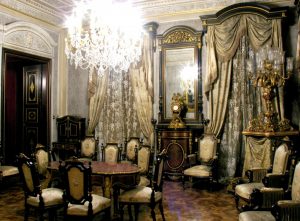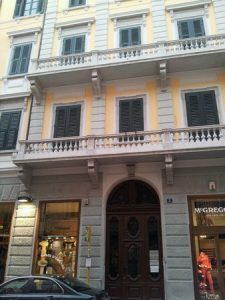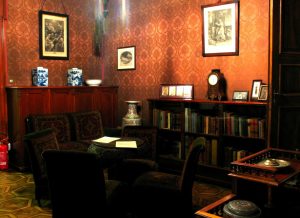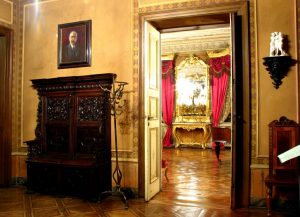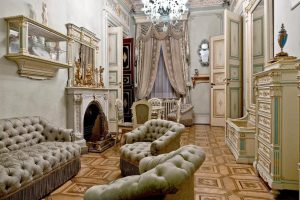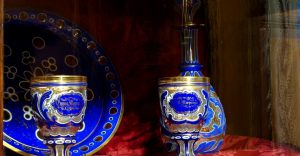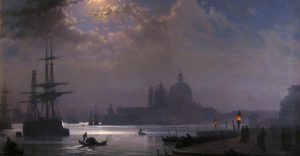E’ l’appartamento di una ricca famiglia della borghesia imprenditoriale triestina dell’800 che con gusto raffinato collezionava opere d’arte e preziosi suppellettili.
Nel 1870 le sorelle Emma e Fanny Mondolfo, coniugate con i fratelli Morpurgo acquistarono lo stabile intavolato con il numero 839, ora via Imbriani 5,e quello adiacente numero 840,ora via Mazzini 42. Demoliti questi antichi edifici, nel 1875 l’architetto Giovanni Berlam progettò un palazzo di eleganti e sobrie forme neorinascimentali. Giacomo e Fanny Morpurgo con i figli Mario e Matilde,
nel 1878, andarono ad occupare l’appartamento situato sull’intero secondo piano, mentre Carlo Marco ed Emma Morpurgo scelsero quello corrispondente al primo piano
Alla morte di Emma la casa passò interamente alla sorella, la quale nel 1938 fece atto di donazione in favore dei figli. Ambedue alla loro morte lasciarono le rispettive proprietà al Comune di Trieste. Mario Morpurgo nel suo testamento, stilato nel 1941, destinò quale erede di tutta la sua sostanza il Comune di Trieste, oltre alle collezioni d’arte, tutto il mobilio e l’arredamento e tutte le sue rendite patrimoniali furono destinate a creare un fondo intangibile con il nome Mario Morpurgo de Nilma.La fondazione tuttora esistente ha lo scopo di soccorrere persone indigenti, con preferenza per quelle decadute, nate e residenti a Trieste.
L’appartamento del secondo piano con quasi intatto il suo mobilio divenne Civico Museo Morpurgo e quello al primo fu nel 1950 adibito a Museo del Risorgimento e a quello di Storia Patria. Una preziosa raccolta di maioliche settecentesche,
vasi di Savona, maioliche di Faenza e di Castelli l’Abruzzo,vasellame giapponese, vetri boemi e completi servizi da tavola in porcellana francese Pillivuit con monogramma,le xilografie e le incisioni di grandi artisti come Jacques Callot, Gérard Edelink, Pierre Drevet, Giandomenico Tiepolo, Francesco Bartolozzi, Jean Balvay, Max Klinger e Félix Vallotton e la galleria di sessanta quadri,disegni e dipinti
tra questi quelli più antichi eseguiti da artisti della cerchia di Luca Giordano,rendono la visita un’esperienza unica di vita vissuta di una famiglia borghese dell’800


